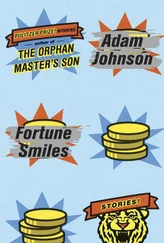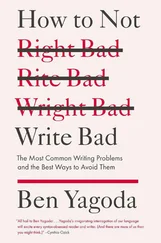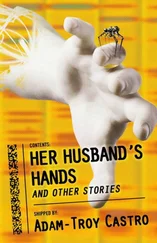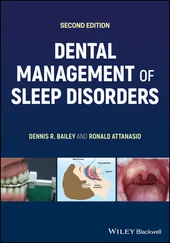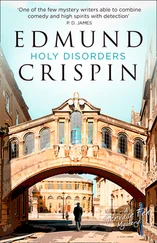…………………….
The two sons of Portugal’s greatest poet agreed, at last, to turn his house into a museum, but they could not agree on its design. The older son, fiercely loyal to his father, wanted to showcase the poet’s study, with its simple but sturdy desk, as well as the grand, extensive library and the little garden in which he strolled after work. The younger son, loyal above all, he said, to the truth , maintained that the two bathrooms, the downstairs bathroom but especially the upstairs bathroom, had to be the focal point of any “honest” museum about their father. A Nunes museum that did not emphasize the bathrooms, the younger son insisted, was not an “honest” Nunes Museum at all.
The two sons ultimately agreed to split the house and open their own museums: the Nunes House and the Nunes Estate. Both offer guided tours depicting a day in the life of Nunes. The Nunes House tour starts in the bedroom, heads first to the study, then to the library, and concludes in the garden. The tour guide recites poems related to each location. The Nunes Estate tour begins, likewise, in the bedroom, but proceeds first to the upstairs bathroom, then to the kitchen, and then to the downstairs bathroom. The tour guide recites a poem related to this location. The tour guide then sort of wanders aimlessly through the house, shouting at everyone to shut up, he’s trying to think, before winding up back at the upstairs bathroom. He recites a poem related to this location. Visitors are then encouraged to journey back and forth between the two bathrooms on their own, following the well-demarcated “Path of Nunes” from the upstairs bathroom to the downstairs bathroom to the upstairs bathroom to the downstairs bathroom, and finally back to the bedroom. Interactive stations along the path invite younger visitors to stop, listen closely, and report, via the touchscreen, whether there are any sounds that might “interfere with your ability to think.”
Both museums expect to expand over the coming year, the Nunes House incorporating the meditation alcove in the attic, the Nunes Estate adding the basement half-bathroom supposedly frequented by Nunes during the 1984–85 composition of The Lisbon Cycle .
Neither museum, according to Nunes scholars, contributes anything to our understanding of his poetry.
…………………….
His great-great-grandfather was a Belarusian shoemaker. His great-grandfather was a music teacher. His grandfather was a respected attorney. His father reached the very pinnacle of the medical profession, and just days ago was named director of the National Institutes of Health. He himself, like his great-grandfather, was a music teacher. But it is one thing to teach music when your father is a Belarusian shoemaker, and quite another to do so when your father runs the NIH. Order , as he put it in his suicide note, matters .
…………………….
He did not know who his father was, but he could narrow it down to four men his mother had dated in the mid-1980s: a powerful politician, a wealthy industrialist, a wise rabbi, or a sort of artist-slash-tinkerer who had designed an unusual cylindrical fish tank and ultimately hanged himself from a beam in his garage.
As a child, he prayed that one of them (not the despondent fish tank maker) would appear one day and proclaim himself to be his father. That never happened. Upon graduating from college, he was still, as it were, in the dark.
Since his father would not reveal himself, and his mother, if she knew, would not tell him, it was up to him, he realized, to deduce who it was. His only evidence would be himself. Years from now he would take a look at his life. Had he amassed power? Then, he would conclude, he was the politician’s son. Had he amassed a fortune? The industrialist’s son. Had he amassed wisdom? The rabbi’s son. Had he gone into fish tank design? Fish tank guy’s son.
He felt a bit like the planchette on a Ouija board, gliding to and fro under ghostly influences. Whenever he felt the urge to command men, to impose his will on society, to punish the wicked and aid the weak — then he felt the hand of the politician. But that urge would be displaced by another: to multiply his resources, to live in luxury, to provide for his loved ones. Those days he was the industrialist’s son. But the next morning he would feel empty and unfulfilled. He would seek meaning, simplicity, calm. That was the rabbi in him. But before long he’d have an innovative idea for a fish tank. He would sketch shapes or forlornly diagram new self-cleaning mechanisms. Then he felt the presence of the disconsolate fish tank guy. And that, he was perturbed to discover, was the influence he felt more and more often.
Time went by.
Twenty years later he took stock of things. He surveyed his life. He had no power. He had no money. He had no wisdom. But he had patents pending on two fish tank designs (one with a so-called Algae Eradicating Vacuum Nozzle, the other with his Skim System Automatic Protein Skimmer) and was clinically depressed.
He took the evidence of his life (his tank designs, his depression) and threw them at his mother’s feet, demanding that she admit, at long last, that he was the son of the despondent fish tank maker, just as he’d always feared. But she would not admit it. In tears she now insisted, rather belatedly, that he was the son of the industrialist, the “most happy-go-lucky guy,” she said, that she had ever met.
How then, he asked, to explain this (Protein Skimmer) and this (depressed head)?
Desperate, presumably, for him to avoid the fish tank maker’s fate, she attributed what was so obviously his genetic destiny to some sort of perverse self-fulfilling prophecy. And that was her line for the rest of his life, a short life of modest fish tank innovation and metastasizing melancholia. Whenever he complained that his life had been completely determined at the moment of his conception, if not the moment she had first laid eyes on that morose tinkerer, she insisted that if his life had been determined at all, it was by the story he chose to tell about it — a tale of fish tank design and depression that could not help but come to fruition — and not by the genes he had inherited from his father, who, she maintained to the day of her son’s death, was an exuberant industrialist.
…………………….
Earlier this year we attended a performance of our friend’s oneman show, Dr. Horowitz, D.D.S ., which he, Max, had described to us as the “definitive takedown” of his father, the Dr. Horowitz of the title. Max had warned us that the show, which was being put on in the multipurpose room of an Armenian church, would not hold back “whatsoever.” It would, he said, destroy his father, devastate his family, and ravage modern dentistry. Our friend’s “total commitment to art” prevented him from sugarcoating the truth about his father, one of our suburb’s most beloved pediatric dentists.
“It is seventy-five minutes of betrayal and brutalization, plus a ten-minute intermission,” Max told us just before the first performance.
But the show we saw that night would be better described as an extraordinarily tender portrayal of a skillful dentist and loving family man.
His father, visibly moved, led us in a standing ovation. The multipurpose room of the Armenian church resounded with applause.
To this day Max remains bewildered by the response to his show. “I actually do not understand why my father’s still speaking to me,” he said. “After I annihilated him.”
Читать дальше

